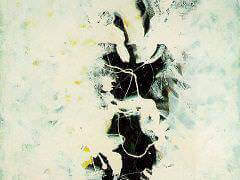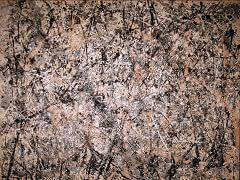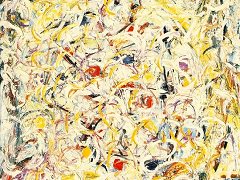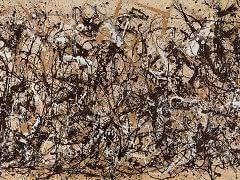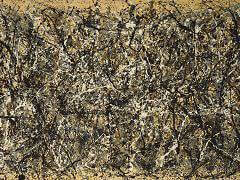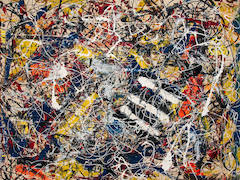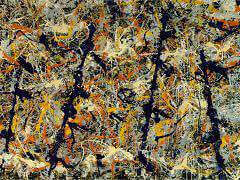Mural on Indian Red Ground, 1950 by Jackson Pollock
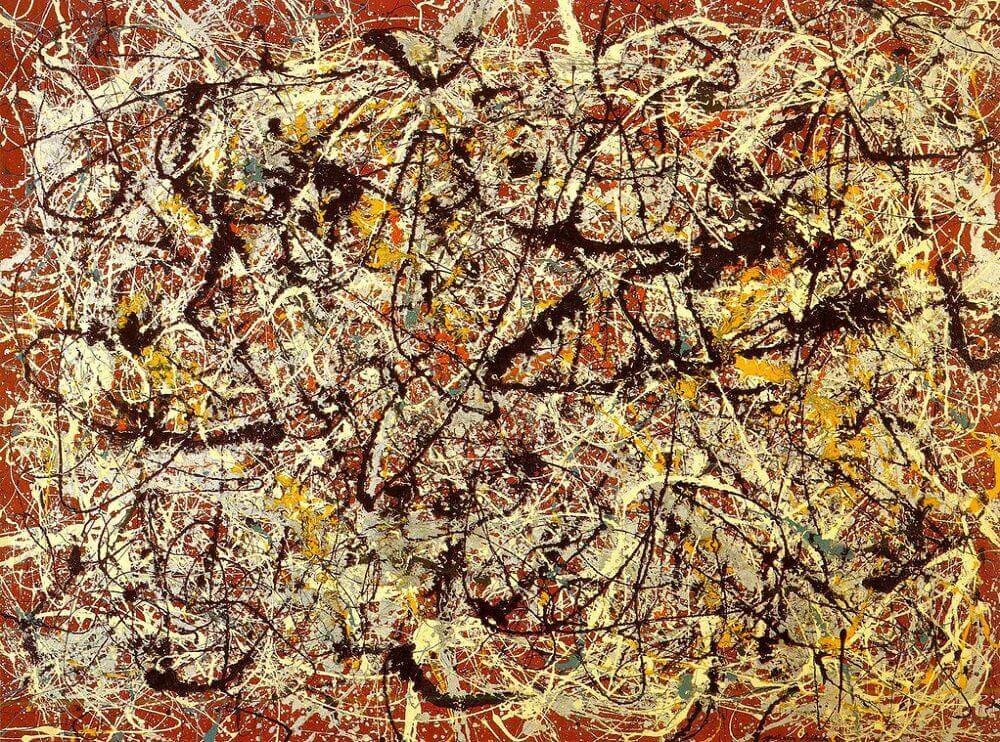
Mural on Indian Red Ground was acquired by Shah Mohammad Reza Pahlavi's wife, Farah Pahlavi, an avid art connoisseur and collector, who established the Tehran Museum of Contemporary Art. After the 1979 revolution, the paintings were stored in the basement of the museum and carefully looked after for about 30 years, alongside pieces by Picasso, Rene Magritte, Willem de Kooning, and Roy Lichtenstein. In a 2005 exhibition Mural on Indian Red Ground and many other paintings were displayed for the first time after the revolution.
Following the advances made by Cubism, Futurism, Surrealism, and all the other daring "isms" of early 20th-century art, there seemed to be no more virgin artistic territory left for aspiring artists to stake out - until Pollock came on the scene during WWII. Taking inspiration from experimental drip paintings by the German Surrealist Max Ernest, who was sitting out the war in New York, Pollock pioneered Abstract Expressionism and the technique of Action Painting, in which paint was thrown onto a canvas laid on the floor. His results were dense, energetic compositions that were the visual equivalent of the free jazz experiments and Beat poetry of the same period, and made Pollock instantly famous.



